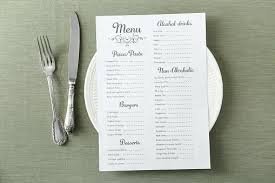Pricing a menu is both an art and a science, crucial for the success of any restaurant or food service business. The price of menu items influences customer perception, profitability, and overall business sustainability. This article delves into the various factors that go into determining menu prices, offering a comprehensive look at the considerations and strategies used by restaurateurs and food service professionals. The Chick-fil-A menu with prices is carefully crafted, considering the cost of ingredients, labor, and operational expenses to ensure that the items offered are both affordable and profitable.
-
Cost of Ingredients
The most fundamental factor in menu pricing is the cost of ingredients. This is often referred to as the food cost and is usually expressed as a percentage of the final selling price. Restaurateurs aim to keep the food cost within a specific range, typically between 25% to 35% of the menu price, depending on the type of establishment. Sesame Mooncake Singapore
- Direct Costs: These include the primary ingredients needed to prepare a dish. For instance, the cost of beef in a steak dish or the cost of pasta in a spaghetti entrée.
- Indirect Costs: These encompass supplementary items such as spices, garnishes, oils, and other ingredients that contribute to the final dish but in smaller quantities.
To calculate the cost of ingredients for a particular dish, the total cost of all components is summed up, and a markup is applied to cover additional costs and profit.
-
Overhead Costs
Overhead costs include all the expenses required to run the restaurant that are not directly tied to food preparation. These costs must be factored into menu pricing to ensure the business remains profitable.
- Rent and Utilities: The location of the restaurant significantly impacts overhead. A prime location in a busy city center will have higher rent costs compared to a suburban area, which in turn affects menu prices.
- Labor: Wages for chefs, kitchen staff, waitstaff, and management contribute to overhead costs. High labor costs, particularly in regions with higher minimum wage requirements, can lead to higher menu prices.
- Operational Expenses: This includes costs for maintenance, cleaning, equipment, and other operational needs.
To ensure these costs are covered, a portion of the menu price is allocated to overhead, often through a markup on the food cost. When setting prices on the menu, Chick-fil-A ensures that customers can easily use their Chick-fil-A gift card balance to enjoy a variety of meals without worrying about exceeding their budget.
-
Market Demand and Competition
Understanding the market demand and the competitive landscape is essential when setting menu prices.
- Target Audience: The demographic that the restaurant caters to—whether it’s high-end diners, families, or college students—will influence price points. A fine dining restaurant can charge premium prices, while a casual eatery may need to keep prices more affordable.
- Competition: Restaurants must consider the prices of similar dishes at nearby or comparable establishments. Pricing too high may drive customers to competitors, while pricing too low could hurt profitability.
Competitive pricing strategies, such as penetration pricing (setting lower prices to attract customers) or skimming (setting higher prices for unique or premium offerings), can be employed depending on the business goals and market conditions.
-
Perceived Value
The perceived value of a menu item is how much customers believe a dish is worth, which can differ from its actual cost. Restaurants often charge more for dishes that have higher perceived value, even if the cost of ingredients is relatively low.
- Presentation and Ambiance: The way a dish is presented, the quality of service, and the overall dining experience contribute to the perceived value. Fine dining establishments can charge more due to the luxurious atmosphere and meticulous presentation.
- Branding: Restaurants with a strong brand or reputation can command higher prices. For example, a well-known chef or a restaurant featured on popular food shows can increase perceived value.
-
Psychological Pricing
Psychological pricing involves setting prices that have a positive psychological impact on consumers. This includes strategies like:
- Charm Pricing: Setting prices just below a round number, such as $9.99 instead of $10, to make the price appear lower.
- Price Anchoring: Presenting a higher-priced item alongside lower-priced items to make the latter seem more affordable.
- Bundling: Offering a combo meal at a lower price than ordering each item separately, encouraging customers to spend more.
These techniques can enhance the perceived value and encourage customers to choose certain menu items. 6 Profitable Food Business Ideas for 2024
-
Portion Control
Portion size directly impacts the cost of a dish and its price. Restaurants must carefully balance portion sizes with pricing to meet customer expectations while maintaining profitability.
- Standardizing Portions: Ensuring consistent portion sizes helps control costs and customer satisfaction.
- Upsizing Options: Offering larger portions for an additional cost can appeal to customers willing to pay more, increasing overall revenue.

